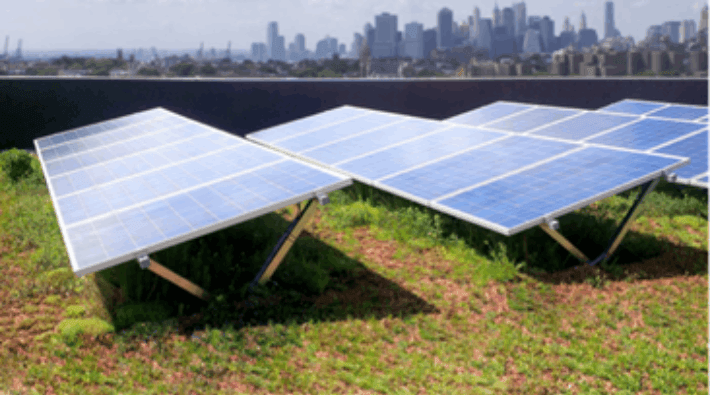
Our Community Goal
Social justice and resource allocation to historically underinvested communities is a clear issue that cities are addressing to ensure local social and economic resiliency. Texas Innovates aims to bring together stakeholders to address City of Houston’s Complete Community’s objective & resiliency needs and be the flagship development that the world visits for smart city and sustainable practices that are practical & economic. This will incorporate building out new technologies across various levels of development to provide local green services in energy, water and food management. We believe this can be an opportunity to showcase a green urban revival and provide new jobs that only require a bike commute for residents.
Key Ingredients that the TI Campus will provide for the community and for Houston:
- Urban Renewal: Many successful urban renewals have used innovation as a key component to increasing diversity, creating urban growth and attracting new residents.
- Active and Green Living: The Texas Innovates Campus will promote biking and walking by design, by not only providing amenities, but creating a green integrated experience. We will do this not just for our resident and businesses, but will be a stop for bicyclists and joggers as they stop by the campus. Onsite Bicycles will be available for residents and businesses and to Downtown Houston.
- Resilient: Texas Innovates architecture is designed with resilience in mind, not just for flooding, but other major disasters, and for long term socio-economic growth.
New green services for the site and neighborhood
One of the primary goals of the Innovation Center design is the provision of collaborative and shared workspace. These programmatic elements will provide local and regional users a central location to work in a close network of a variety of industries, utilizing a workforce of varying degrees of experience and educational attainment. These strategies hope to bolster a local workforce while attracting users and accompanying businesses to help decrease long-distance commuter behavior.
One of the site functions is that of an urban agricultural center. With the introduction of urban farming and community gardens in the neighborhood, residents will be provided both a source of fresh produce, and the chance to participate in and learn about sustainable, urban growing practices. The site will also house a compost facility to repurpose organic waste into compost for use in the gardens.
Building-wide practices will follow a sustainable model, with design at every level aimed at reducing energy consumption and increasing occupant and neighborhood health and wellness. High efficiency and low flow fixtures will be utilized in all spaces to reduce water consumption and wastewater treatment onsite for non-potable uses. Onsite power generation will reduce emissions and create a decentralized energy system. Waste management techniques will be employed that responsibly divide recyclable and compostable materials (with the latter going on to be used in the site’s agricultural applications). Not only would these practices be used for site-generated waste, but community programs could be established that would encourage nearby residents and business owners to contribute their own recyclable and compostable waste. These programs could also act as educational tools to inform the public of sustainable practices that can be applied in their own lives. Research indicates that education and accessibility are major drivers that impact individual environmental accountability. The waste management system implemented at this site seeks to address these drivers and to reduce landfilled waste generated in the neighborhood.
Other parks in the area, such a Marron Park, are conveniently accessible to either the existing hike/bike trail or residential areas. The proposed linear park, though, would connect residents, the bayou, and major thoroughfares through a community oriented, well-designed public space, and the Innovation Center building would serve as a piece of the larger community network. The interconnectivity will support walking and biking activities and reduce vehicle usage (emissions, pollution).
The site would also feature a stormwater retention area, part of which would double as an entertainment venue during dry periods. This amenity and the surrounding areas would serve as a destination feature adjacent to the bayou, increasing the use of the site and accompanying park and will improve exposure of and investment in the neighborhood.
The microgrid that generates onsite power and the MBR that treats recycled greywater will serve as additional features and serve as inspiration for similar projects in the area. Furthermore, the site will an excellent destination for local students to learn about sustainable technologies and the community services that they can provide.

To ensure long-term sustainability of these green services, these services will be self-funded or supported on a volunteer basis (e.g. community garden). A stakeholder engagement manager will evaluate social impacts in the neighborhood and implement changes to the services as required.
The industrial composting unit will use onsite energy and waste collected from residents and the surrounding community. These amounts will be tracked to quantify the amount of organic waste that would have otherwise been landfilled. This compost will be used as a soil amendment for the community garden, hydroponic farming tower, and any landscaped areas requiring additional nutrients.
The bike hub that will connect the various trails will be a centerpiece for community interaction. It will have storage and rental facilities that are paid, though subsidized for local residents. These funds will support these services as well as the trails and gathering areas.
The stormwater retention pond that doubles as a concert arena during dry months will be rented out for events and provide an income to maintain the arena. This will be in the spirit of the Willow Waterhole Green Space Conservancy and Project Brays, and will add to Houston’s basin bottom infrastructure and will host public events and concerts. Asakura Robinson has already been involved in these types of efforts in Houston, with the work done at the Willow Waterhole. That project has proven highly successful with annual concerts and events of many types.
